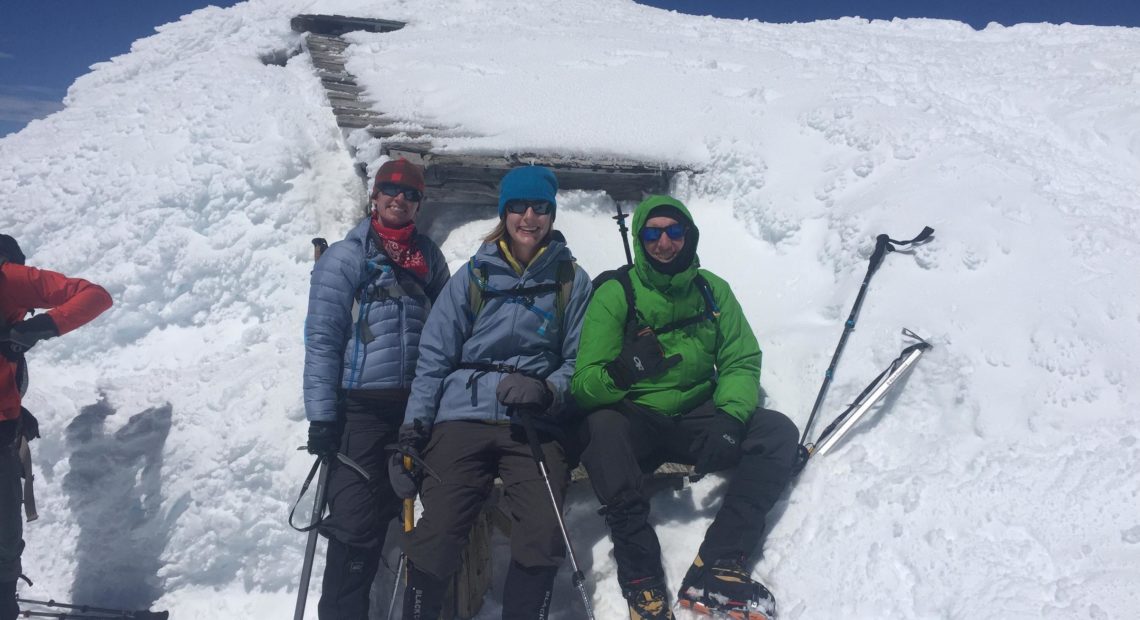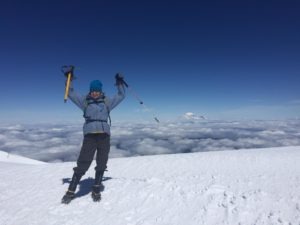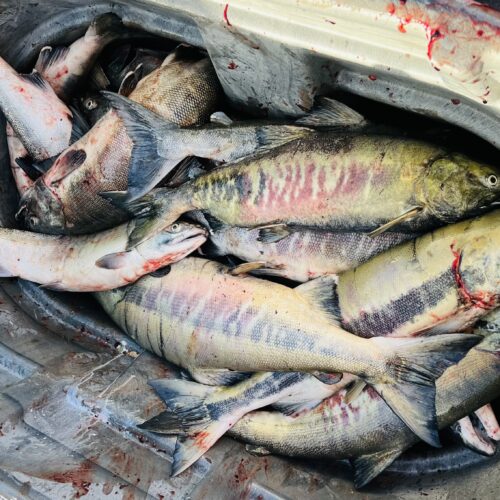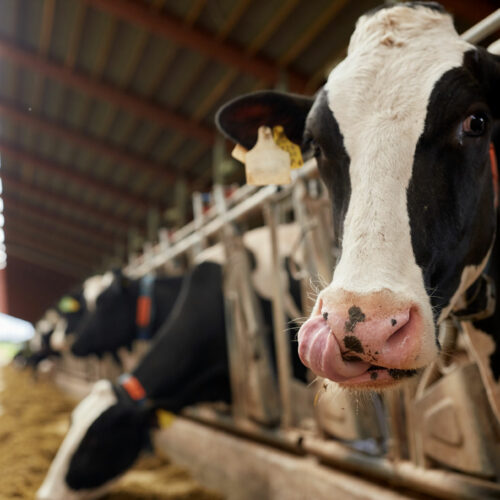
A First Climb Up Mount Adams
Listen
Mount Adams rises above the horizon as Washington’s second tallest volcano — 12,276 feet. It’s a peak that Northwest Public Radio’s Courtney Flatt has been dreaming of reaching for years. She convinced two friends to climb to the summit with her this summer, and sent an audio – and video – postcard.
I’d been dreaming of summiting Mount Adams for years. Ever since I first moved to the Pacific Northwest Washington’s second tallest volcano was a challenge I wanted to conquer.
And now here I was at the South Spur, or South Climb, trailhead, with two friends who were equally as crazy as me. At least that’s what I was thinking as I peered up at the summit, stretching roughly 12,276 feet into the sky.
About 6,000 climbers each year attempt to make it to the summit, according to the U.S. Forest Service, many making their goal. We hoped to join those ranks.

The top of Mount Adams’ infamous false summit, known as Piker’s Peak, whichblocks the real summit from view. It’s tough — you gain about 2,000 feet in elevation.
Photo credit: Courtney Flatt
This would be the first summit for me and my friend, Tri-City Herald reporter Sara Schilling. (You should read her version of the story.) Our other hiker and appointed leader, outdoor enthusiast Eddie Goss, had made it to the peak of Mount Hood about a month earlier.
“Going up [a mountain], you’re always like, ‘What am I doing this for?’ Then you get to the top, and you sit down, and nothing else is there but you,” Eddie said. “It’s what makes life worth living, moments like that.”

Sara Schilling hikes up a hilly ridge on the first day. The group camped just beyond the top of the ridge. Many hikers split the climb into two days.
Photo credit: Courtney Flatt
So we packed up and began our long, 6-mile slog to the summit. We’d chosen to break the trip up into two days, camping on the mountain to help acclimate to the altitude.
The first part of the hike was pretty easy. There were lupines blossoming all around, and it was just a beautiful, clear day.
“It really is stunningly beautiful out here,” Sara said, as we rounded a bend and the valley below us came into view. “The sky is just so crazy blue.”
About a mile and a half in we made it to the snow, strapped on our crampons, and started to climb up a hilly ridge. At the top, that’s where things got a little tougher — we definitely hadn’t eaten enough food all day, and were starting to crash.
So we set up camp a little short of our goal for the first day. We had hoped to make it to Lunch Counter, a flat area just below some of the steepest terrain before the summit.
“There’s nothing that says we have to make it to Lunch Counter,” Eddie said. “It’s getting late. Let’s have a meal while there’s still light. It’s going to be a long slog tomorrow.”
That night was bitterly cold. We got almost no sleep.
“I feel like it’s the coldest I’ve ever been in my life,” Sara said the next morning.
We woke just after 4 a.m. ready for our final summit push, even though we got a bit of a late start.

Courtney Flatt poses at the top of Mount Adams. You can see Washington’s tallest peak, Mount Rainier, rising about the clouds in the background.
Photo credit: Sara Schilling
To get to the summit, first you have to make it up Piker’s Peak, a false summit that blocks the real summit from view. It’s tough — you gain about 2,000 feet in elevation.
Our mantra became: One foot in front of the other.
And then, step-by-step, we were almost there.
Reaching the top was exhilarating. I was so tired — everything hurt, but I was really happy.
The view was amazing. Wind whipped around the peak. From the top you can see Mount Rainier, Mount St. Helens, Mount Hood.

Climbers need crampons and an ice axe to make it up steep pitch of Piker’s Peak.
Photo credit: Courtney Flatt
Then it was time to head down, maybe my favorite part of the whole day: glissading. It’s like sliding down a luge on your butt, and you use your ice axe as a brake.
After several more miles of hiking down once the year-round snow turned into dirt, and we’d made it back to the car.
Driving back into town, we reflected on the trip.
“The first half of the false summit, I was like, ‘I can do this. This is not so bad,’” Sara said. “The second half was a nightmare.”
“There was a false summit to the false summit,” Eddie laughed.
“And we were at the top, and it was like, ‘Well, you can see it. You can’t turn around now,’” Sara said.
We were all glad we’d kept going.
“It was neat to think about us being another one in a long line of people to make it there to see how beautiful it was and to have done something like that,” Sara said.
As Eddie said: Moments like that are what make life worth living.
P.S. If you’re planning to climb to the summit, you should note that the peak is covered in snow year round.
Tri-City Herald reporter Sara Schilling contributed to this report.
Copyright 2016 NWPB
Related Stories:

Hazardous chemicals leak into groundwater below Pasco Sanitary Landfill
The thermal treatment system for soil contamination in Zone A of the Pasco Sanitary Landfill. (Credit: Washington Department of Ecology) Listen (Runtime 1:07) Read A closed landfill just outside Pasco,

Inslee approves controversial wind farm near Tri-Cities
Horse Heaven Hills, in southeastern Washington, with Webber Canyon in the distance. Washington Gov. Jay Inslee approved a large-scale renewable energy project along 24 miles of ridgelines in the area.

What is Initiative 2117?
Phuong Brown, a retiree in Walla Walla, received a free heat pump through the Climate Commitment Act. Initiative 2117 aims to repeal the act. (Credit: Susan Shain / NWPB) Listen
















